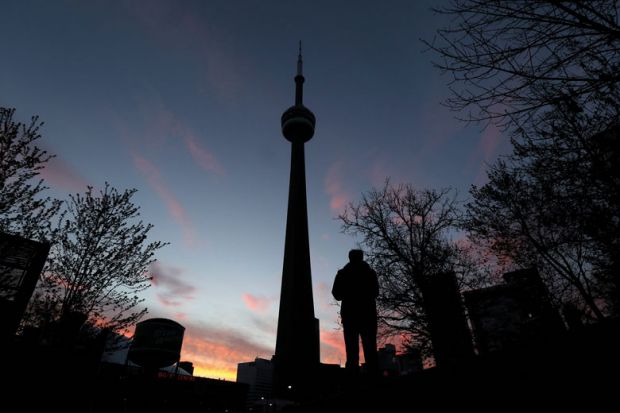Several Canadian universities are adding on-campus gathering spaces for black students, describing them as essential places for psychological breaks from the pressures and abuses that they see students confronting in their everyday lives.
Among the latest are two large research institutions in Toronto, York University and Toronto Metropolitan University, which established the spaces this year. The University of Winnipeg has had one for several years, and the University of British Columbia plans to add one soon.
There had already been such spaces in some places in Canada, but interest in them grew in the aftermath of the George Floyd killing in 2020, said Cheryl Thompson, an associate professor in performance who helped lead the creation last year of a black studies minor at Toronto Metropolitan.
The facilities are generally modest – the one at Toronto Metropolitan is a standard meeting room inside a university building along the main quad that accommodates about 30 students, with a small accompanying kitchen area.
The underlying purpose, however, is far more substantial, said Tanya De Mello, the university’s vice-president for equity and community inclusion. “In the lounge, black students are reminded that they exist beyond their trauma and oppression,” she said.
Not everyone understands that need. At some campuses in the US, where the lounge idea goes back for decades, dedicated spaces have also attracted pushback. Both the University of Virginia and Arizona State University have had tense incidents in recent years of black students asking white students to leave designated multicultural spaces.
The Toronto Metropolitan lounge already has generated some signs of friction, Professor Thompson said. Merely because she has publicly supported the lounge, she said, “I’ve received some not-so-nice emails from white supremacists.”
Their complaints appear to reflect a mistaken belief that lounges for black students are primarily an exercise in excluding white students, Professor Thompson said. She explained that the lounges arise from a recognition that the daily realities of life regularly exclude and, too often, threaten racial minorities, and that people sometimes need a respite from that feeling.
“People just don’t understand the importance of just holding space with people who look like you – it’s not about segregating,” she added.
One of the students organising the Toronto Metropolitan lounge, Eboni Morgan, described the lounge as a place to “study, relax and build community” on a campus where black students account for just 7 per cent of undergraduates and 5 per cent of the graduate students. It’s “a critical part of our efforts to address the exclusion and lack of psychological safety that many students from equity-deserving groups face on university campuses,” Ms Morgan said.
The value of such experiences was outlined in a study by two economists at the University of New Orleans and Spelman College looking at historically black colleges and universities in the US. The study, published by the National Bureau of Economic Research ahead of peer review, was aimed at understanding why black students at the HBCUs fare better than their peers across US higher education on a range of key measures including graduation rates, career salaries and even lifetime health. The researchers largely attributed the gains to the frequency with which black students see other black students doing well.
Eventually, Professor Thompson said, the black student lounges on predominantly white campuses will need to grow and evolve, to become more significant players in their institutions. “It shouldn’t just be a hangout,” she said. “It’s like a garden – you really have to care for that garden for it to grow.”
Register to continue
Why register?
- Registration is free and only takes a moment
- Once registered, you can read 3 articles a month
- Sign up for our newsletter
Subscribe
Or subscribe for unlimited access to:
- Unlimited access to news, views, insights & reviews
- Digital editions
- Digital access to THE’s university and college rankings analysis
Already registered or a current subscriber? Login












